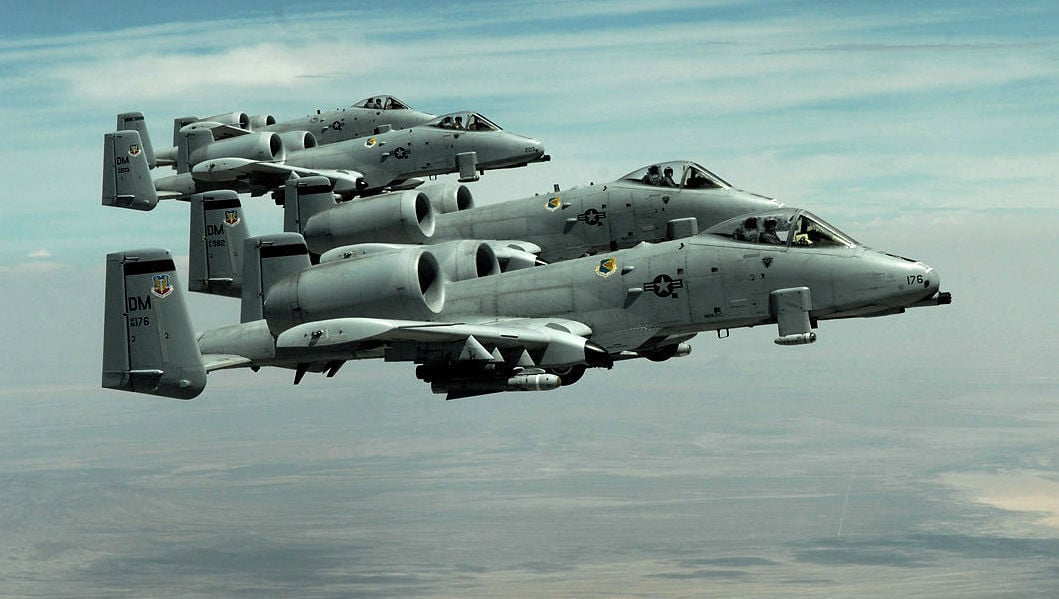A key U.S. Senate committee has rejected a request by the Air Force to start retiring some older A-10 Thunderbolt II ground-attack jets, a mainstay mission at Davis-Monthan Air Force Base.
The Senate Armed Services Committee on Thursday released a summary of its markup, or amended version, of the National Defense Authorization Act for fiscal 2021, including a provision that “prohibits divestment of A-10 aircraft.”
The bill must still be voted on by the full Senate and reconciled with a version in the House, which is holding subcommittee hearings on the NDAA and plans a full markup session by the full House Armed Services Committee for July 1.
Air Force officials in February unveiled plans to start mothballing several older platforms as soon as this fall, retiring 44 older A-10s as it refits others with new wings.
That plan drew bipartisan blowback from Arizona Sen. Martha McSally, a Republican and former A-10 combat pilot, and Tucson Democrat Rep. Ann Kirkpatrick, who vowed to fight the A-10 retirements.
Kirkpatrick wrote in letters to the Air Force and House committees that she had learned that the plan entailed the retirement of 42 A-10s stationed at D-M, home to the nation’s biggest A-10 contingent with three squadrons comprising about 60 planes.
McSally, who sits on the Senate Armed Services Committee, has been fighting the forced retirement of the A-10, along with the late Sen. John McCain and other members of the Arizona congressional delegation since she was a member of the House in 2015.
“I know the unique capabilities that the A-10 brings to save American lives on the battlefield,” McSally said, who commanded a combat A-10 squadron at D-M.
Developed in the 1970s around a rapid-fire cannon that can destroy tanks, the “Warthog” is the nation’s only dedicated aircraft for close air support of ground troops and has been lauded for its effectiveness in Iraq, Afghanistan and Syria.
The Air Force began efforts to retire the A-10 fleet in 2014, contending it was too vulnerable to sophisticated air defenses, but was beaten back by supporters in Congress who approved new funding to replace the A-10s aging wings.
In 2015, the Air Force deactivated 18 A-10s, including nine at D-M, and put them into “backup inventory” status.
But last year Boeing Co. completed a 12-year, $1.1 billion Air Force contract to replace wings on 173 A-10s whose wings had passed their useful flying hours.
Also in 2019, Boeing was awarded a new contract worth up to $999 million to install 112 new wing assemblies, but that depends on incremental appropriations.





